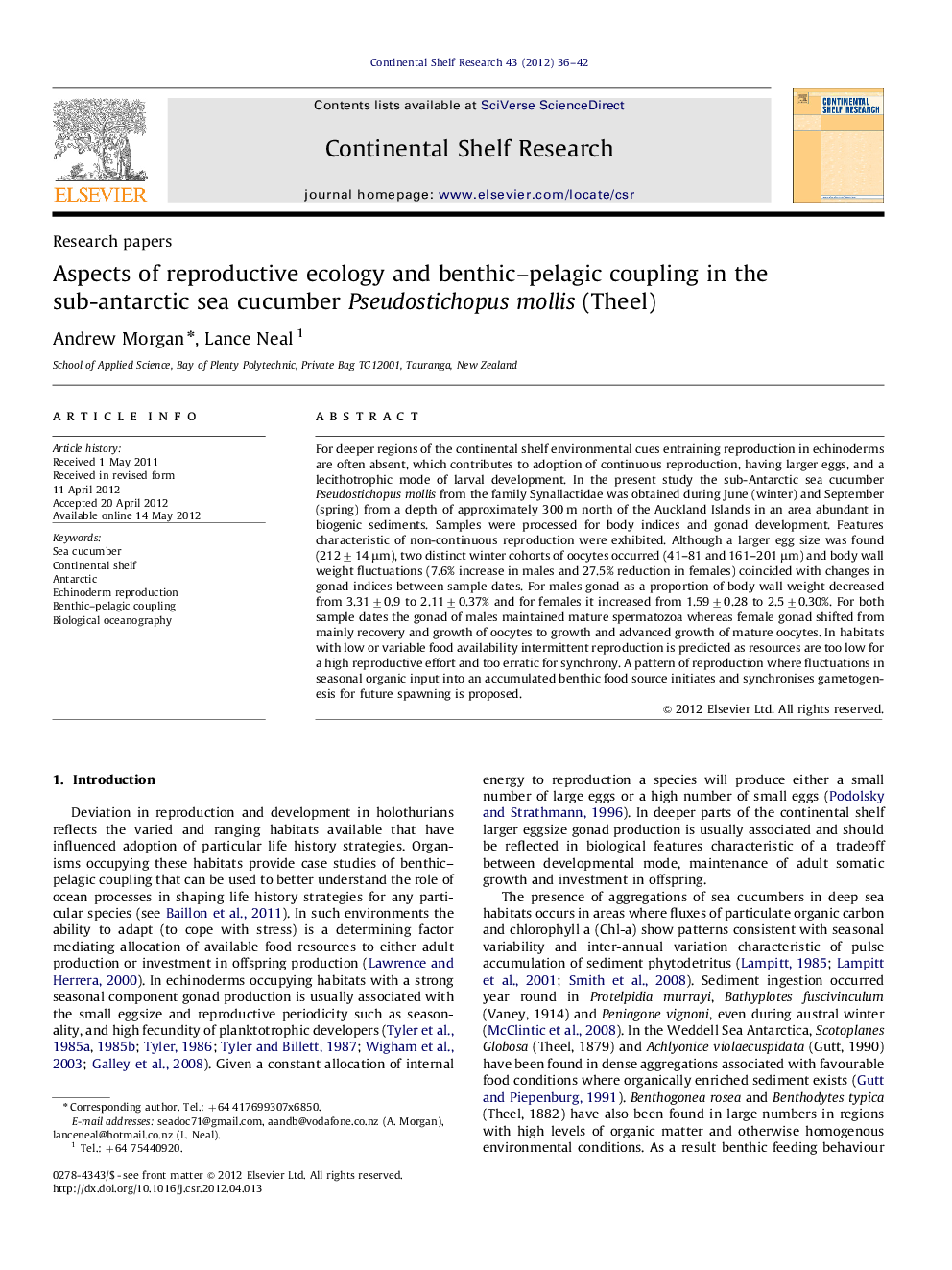| Article ID | Journal | Published Year | Pages | File Type |
|---|---|---|---|---|
| 4532368 | Continental Shelf Research | 2012 | 7 Pages |
For deeper regions of the continental shelf environmental cues entraining reproduction in echinoderms are often absent, which contributes to adoption of continuous reproduction, having larger eggs, and a lecithotrophic mode of larval development. In the present study the sub-Antarctic sea cucumber Pseudostichopus mollis from the family Synallactidae was obtained during June (winter) and September (spring) from a depth of approximately 300 m north of the Auckland Islands in an area abundant in biogenic sediments. Samples were processed for body indices and gonad development. Features characteristic of non-continuous reproduction were exhibited. Although a larger egg size was found (212±14 μm), two distinct winter cohorts of oocytes occurred (41–81 and 161–201 μm) and body wall weight fluctuations (7.6% increase in males and 27.5% reduction in females) coincided with changes in gonad indices between sample dates. For males gonad as a proportion of body wall weight decreased from 3.31±0.9 to 2.11±0.37% and for females it increased from 1.59±0.28 to 2.5±0.30%. For both sample dates the gonad of males maintained mature spermatozoa whereas female gonad shifted from mainly recovery and growth of oocytes to growth and advanced growth of mature oocytes. In habitats with low or variable food availability intermittent reproduction is predicted as resources are too low for a high reproductive effort and too erratic for synchrony. A pattern of reproduction where fluctuations in seasonal organic input into an accumulated benthic food source initiates and synchronises gametogenesis for future spawning is proposed.
► Features characteristic of non-continuous reproduction were related to aspects of benthic–pelagic coupling. ► Body wall weight increased in males and decreased in females between winter and spring samples. ► For males gonad as a proportion of body wall weight decreased and for females it increased. ► The gonad of males maintained mature spermatozoa while oocyte size class in females changed. ► Fluctuations in seasonal organic input may initiate and synchronise gametogenesis for future spawning.
